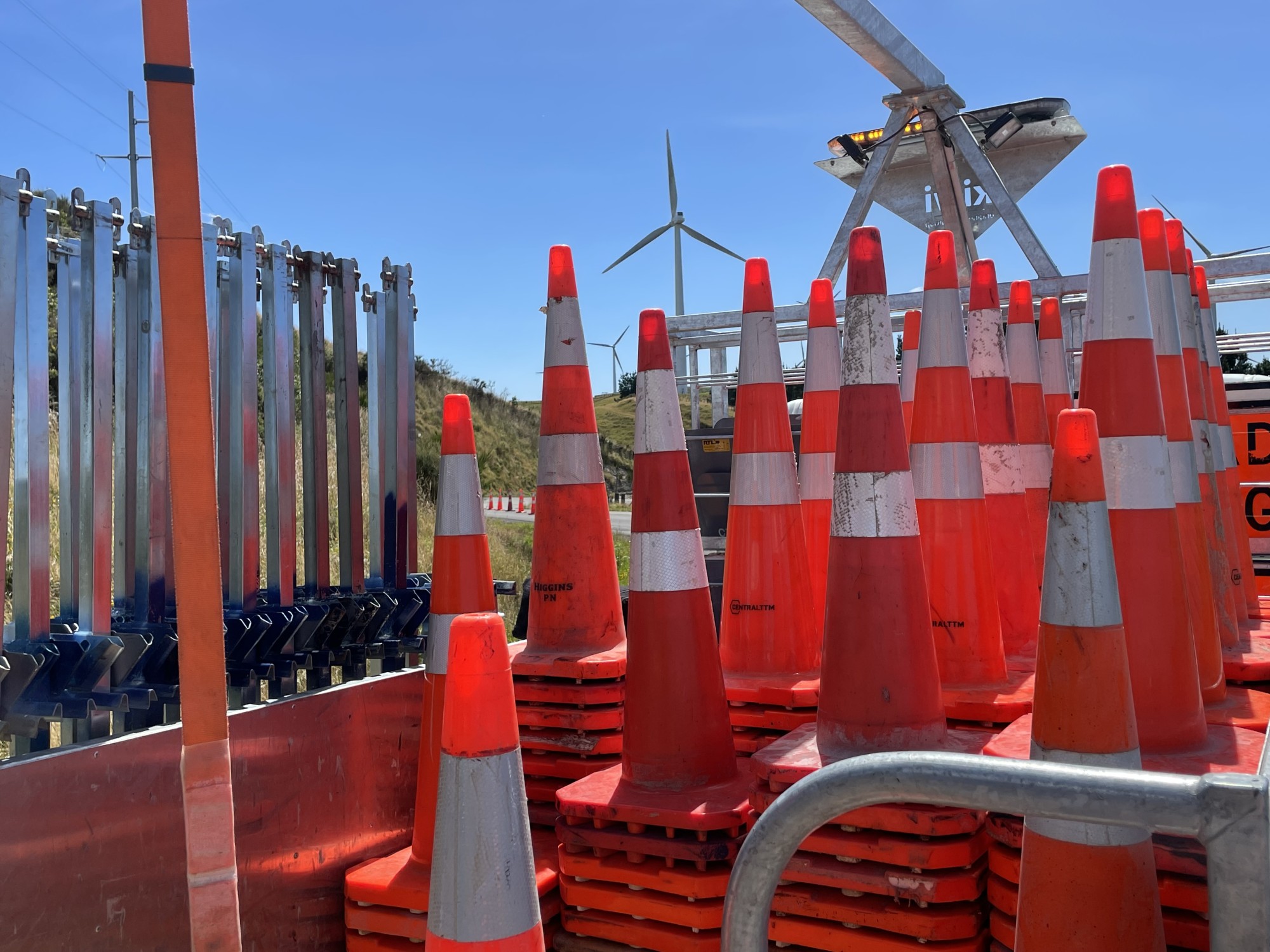The true cost of temporary traffic management
“Contrary to what media articles have suggested, the cost of temporary traffic management is less than they may think,” said Darren Wu on behalf of the Industry Steering Group.
Under the Government Policy Statement on land transport (GPS), all road controlling authorities must report on how much they spend on temporary traffic management, with first quarter results for FY 24/25 showing that NZ Transport Agency Waka Kotahi (NZTA) spent 9.9 and 3.1 percent of their maintenance and operations and capital works spend respectively. While the full details of the results have yet to be published, we estimate the total temporary traffic management spend to be under seven per cent of their National Land Transport Programme (NLTP) expenditure.
“We’ve heard a lot of conflicting commentary about current levels of temporary traffic management being out of control, and excessive use of road cones and temporary speed limits increasing costs,” said Darren Wu.
“This breakdown of costs from NZTA shows that temporary traffic management is only a small percent of what is spent on our state highway projects; but unfortunately, the narrative has focused on dollars in isolation and lost focus on the reason for temporary traffic management in keeping everyone safe.”
Between 2019 and 2023, 356 people were killed or seriously harmed at road work sites, most of whom were road users.
“When the focus is purely on the dollar amounts, we lose sight of the bigger picture. Yes, NZTA spent $786 million, and we acknowledge that it is a big number but that equates to 9.3 percent of total spending out of $8.48 billion. In the grand scheme of things, and at first glance, this amount appears reasonable for keeping our road workers and road users safe.”
As New Zealand continues to build and expand its national infrastructure, the Industry Steering Group believes that the reporting will help the sector, as well as elected officials, better understand what proportion of costs are related to traffic management, as well as where and how costs are being spent.
“While we acknowledge there have been instances, politicised in the media, where the cost of temporary traffic management has appeared excessive in relation to other aspects of the project, the data released by NZTA shows that this is more likely to be an exception and not the norm.
“Overselling the perceived problem of temporary traffic management does not help our road workers, and we are seeing an increase in abuse from the public to our people when negative rhetoric around ‘road cones’ and ‘cost’ take centre stage in our news cycle; this needs to stop.
"The exacerbation of the problem has warranted early work to better understand the issues behind road worker abuse and we’ll be looking to form a cross-sector working group for this in 2025,” said Darren Wu.
“We have temporary traffic management to keep both road workers and those travelling through the road works safe, and the way people respond to it is a crucial factor in how safe these sites are for everyone, including travelers, their families and workers. Respecting the controls in place not only keeps people safe but can make for a smoother, less disrupted journey.”
The Industry Steering Group are confident that regular reporting of costs will help shine light on the perceived cost of temporary traffic management and its importance in our ability to safely undertake crucial infrastructure works across the country. At the same time, the Group are optimistic that it will enable a starting point for the sector to work from to see greater efficiencies and cost savings while maintaining the safety of our road workers and road users.
The industry is already making progress in ensuring temporary traffic management is fit for purpose through the transition from the compliance-based Code of practice for temporary traffic management (CoPTTM) to the more risk-based approach described in the New Zealand guide to temporary traffic management (NZGTTM).
“Moving away from prescribed practices provides the flexibility for appropriately sized temporary traffic management to be applied to specific activities. This will enable a reduction in costs for some worksites, without impacting safety, due to control types and equipment being more suitably sized for the site and risks,” said Darren Wu.
“This change in the way the sector manages risk may not be directly visible to the public but will result in a range of potential tangible benefits like avoiding impact during peak commuter traffic, or significant cost savings, due to more work being done in the same closure and rethinking how, and when, road closures or flow of traffic are managed.”
While NZTA is already making the move to risk-based temporary traffic management, councils across the country are at different stages on this journey.
“NZTA’s adoption of NZGTTM represents the start of a gradual shift towards a more risk-based approach to temporary traffic management being fully realised, and we will continue to support councils and suppliers to understand where they are at and what they need to implement this change,” said Darren Wu.
“With the sector focused on how they can do temporary traffic management better, regular reporting on cost will give us a platform to monitor and track spending, regionally and nationally, as we transition to the new risk-based approach.
“It is an opportunity for the sector to take stock of spending and focus public and political attention on how improved driver behaviours at work sites could see further reductions in temporary traffic management controls.” said Darren Wu.


